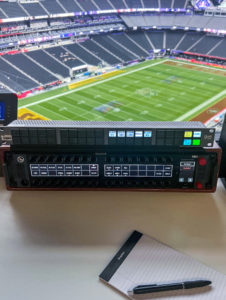We are living beyond the “future” according to Marty McFly and Doc Brown. In the year 2020 we have many different formats of media files. The question we want to answer is what do today’s typical media files look like and what is coming down the pipeline over the next several years.
When it comes to transferring large media files it’s important to understand the currently popular types of large formats and the challenges that come along with them. When working with these large files you want to have the ability to transfer them efficiently and at full-line speeds. Some solutions may force you to compress your files or send them piece by piece. This can result in lost time and data. While compression has a time and place in the released production, it is much more beneficial for the creators to work on uncompressed files during the development of a project. It’s crucial that the professional creators within the media and production industry, research and find the right solution to fit their needs. Listed below are the current most common media formats as well as how large of a format they are. This will give you a better understanding of how much data one project entails and how much data you would transfer at once.

As we continue to move forward with the development of impressive media formats, new technologies to combat productions will appear. This means updated devices, products and software will creep onto our shelves and into our carts. Similar to how the DVD player demolished the VHS in the early 2000s. To keep up with the advancements, you too will need to purchase these tools. Luckily, when it comes to transferring your large video files, there are solutions that will grow with you. FileCatalyst can send millions of files simultaneously at 10Gbps.
The next conversation on the horizon is 12K. At the moment, you will have a difficult time coming across 12K produced videos. This is mainly due to the process of the technology growth and it not yet being fully available to the average creator. However, footage can be produced by using several 8K cameras or a modelled camera that has extended resolution options (if you can manage to get your hands on one.) Ultimately 12K footage is 48.5 times larger than HD resolution and the quality is out of this world. As we look towards the future we can truly appreciate the lines of Marty Mcfly, “I guess you guys aren’t ready for that yet. But your kids are gonna love it.”
Resources:
https://www.redsharknews.com/production/item/5505-this-is-video-quality-like-you-ve-never-seen-before-nyc-shot-in-12k
https://www.forbes.com/sites/dbloom/2020/07/16/blackmagic-ups-resolution-race-with-12k-ursa-mini-pro-video-camera/#7b8238d32a2e









